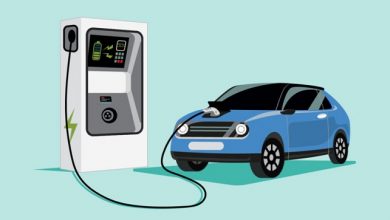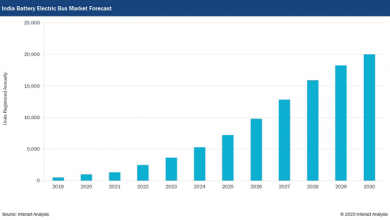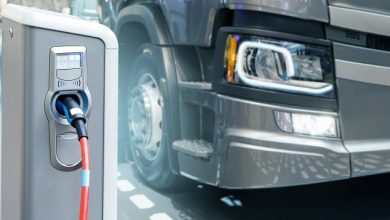How IoT is Helping EV Business

Electric Mobility is booming in India due to the sharp focus of the Government in promoting EV and increasing awareness about environment-friendly fuel alternatives. With initiatives from the government to promote electric vehicles coupled with reduced cost of key elements (i.e batteries), India is poised for a quantum jump in the EV segment. As per the statistics provided by Vahan Parivahan Portal, in India, the sales of EVs have increased by 80% in 2021 compared with last year. However, in comparison to 4-wheelers, the EV 2-wheeler and 3-wheeler are gaining ground faster. Taking advantage of this opportunity, several startups have ventured into the market to cater for the need of growing demand for EVs. The Indian government is also encouraging the citizens to adopt EV through various schemes like FAME, as this will protect the environment as well as meet the target to reduce environmental pollution. The adoption of EV is also helping India to decrease dependency on fossil fuel, eventually leading to a reduction in imports.
The introduction of electric vehicles has brought up new use cases. Electric Vehicles have a low total cost of ownership. Thus, many companies have come up with new business models like bike-sharing, last-mile delivery, hyper-local delivery using EV as a solution. Even the material handling equipment like forklifts, stackers, scissor lifts operate on electric batteries with high load handling capacity. This has necessitated additional infrastructure requirements of battery charging stations and battery swapping stations. With the rising demand for EVs, there are challenges as well. Functionalities related to the range of the vehicle, security against theft, health parameters of the battery, battery technologies etc. require attention.
The battery is the most critical component in EVs. Accordingly, the security and performance of the battery is a concern to many OEM’s. Battery parameters like SOC & SOH are important aspects for the monitoring of battery health, errors could lead to damage or mishaps if ignored. Bike sharing, last-mile delivery applications need security of their vehicles along with the battery status so that it would be easy to track and trace the vehicle and to swap or charge the battery in case the battery is discharged . These businesses are also looking for a keyless and automated process enabling them to monitor and control the bikes remotely, while the end-user can take a bike without a key.
So how IoT could help in the EV business?
SOLUTIONS IOT PROVIDES TO EV MARKET
BMS Monitoring
Ridesharing, last-mile delivery, and leasing companies can monitor the BMS parameters (battery voltage, current, charge and discharge rate, available range of the vehicle) of a vehicle and generate more revenue. They can also disconnect the batteries from the vehicle in case of a rise in temperature or any other defects to prevent the potential damage. This can be done when an IoT device is supported by various BMS protocols like CAN, UART, RS485, or RS232.
Ease of Leasing Batteries
Battery parameters and location tracking are essential features for battery swapping and leasing companies. Batteries swapped can be tracked and monitored by the swapping stations. IoT can help in tracking the batteries and prevent the theft and loss of the battery.
Theft Proofing
Initial prices of EVs are more expensive than IC engine-based vehicles. 2-Wheelers are prone to theft, a battery is expensive, and IoT could assist in more effective tracking. The battery comprises 40% of the cost of EV’s. It is necessary to protect them from theft, thus, theft-proofing these vehicles brings more importance. EVs are also used by bike-sharing and last-mile delivery companies for food delivery, cargo delivery, hyper-local delivery etc. In such situations, EVs can be tracked by using IoT in case they are stolen. These IoT devices can also raise an alarm and alert the owner about the theft.
Immobilization
IoT devices can help us in immobilizing the vehicle in case of theft or misuse. With immobilazer a vehicle can be controlled with additional sensor or controlled via an app. Immobilization could help businesses, for example, bike-sharing companies, to protect their EV’s from theft.
Geo-Fencing
Geo-Fencing is the virtual fence on a map to prevent the vehicle from crossing the marked territory. The function of geofencing could also send an alarm to the owner or the user when a vehicle enters or exits the geofenced area. This could help bike- sharing companies, hyper-local deliveries if they are breaching the territory, and the users would be alerted as well.
Driving Behavior
A user’s driving behaviour is a critical parameter in determining the range of a vehicle and its life
span. Excessive idling, overspeeding, acceleration and sharp turns are needed to be monitored as these scenarios directly affect the battery life, discharge rate, range, and vehicle lifespan. It can also prevent accidents on the road and overspeeding bills, as well as increase the safety of the user. Fall Down / Crash Detection
Fall Down / Crash Detection
IoT devices have built-in accelerometers which can monitor the acceleration and angle. So, the sudden change in acceleration and angle can be detected, and the owner or the company can be alerted about a fall down or crash. This can also be useful to inform about severe accidents.
Predictive Maintenance
Using an IoT we can detect the charge cycle of the vehicle, kilometers traveled, etc. and this data is used for maintenance of the tires, lubrication cycle, battery life, and monitoring other wear and tear parts of the vehicles. This could help in preventing the damage to the vehicle by preventing the use of the wear out parts and increasing the life of the vehicle and its batteries.
Work Hours Monitoring
Forklifts, Scissor lifts, cleaning equipment running time or work time can be monitored by the simple use of an IoT device. Crash or physical impact on such expensive equipment can also be detected utilizing the same IoT device, and, consequently.
KEYLESS ACCESS TO THE EV’S
IoT comes with the help of many ride-sharing companies that provide keyless access to their customers with mobile phone authentication or other BLE beacons. There are 2 ways by which a customer can unlock a bike using a Bluetooth connection. The first would be by authenticating the key using Bluetooth AES128 security, connecting the mobile app to the device via Bluetooth. The second way comes with the use of a Bluetooth identification beacon to authenticate the rider of a bike. These methods help businesses to automate the process of bike booking and sharing by reducing the effort of sharing the physical key at the docket station. The concept of a docket station can be also discarded, as the bike can be locked or unlocked at any region using an IoT device. This increases the ease of using ride-sharing vehicles as they can be made available in any possible region.
OVERCOMING CHALLENGES BY USING IOT
Many times, users abuse the shared vehicle by driving inappropriately and leaving the shared vehicle outside their docket station. Such incidents can lead to theft, tow, or even damage to the vehicle. In such cases, the IoT solutions can help identify such behavior of the user and prevent the loss of the vehicle. A solution provided by the IoT would encourage companies to address various challenges and make them successful in business models of bike-sharing, last-mile transport and provide a way for an easy commute to the market.
Author:

Rajesh Sarangi
Business Head
Teltonika India
Rajesh Sarangi is an adept Business Management professional with 15 Years of experience in Business Consulting, B2B and Go to Market Strategy . With core experience of Automotive Sector, he holds distinction in Product Strategy, Network Development & Project Management as well.He is currently leading the India operation for the Mobility Division of Teltonika.
Published in Telematics Wire





